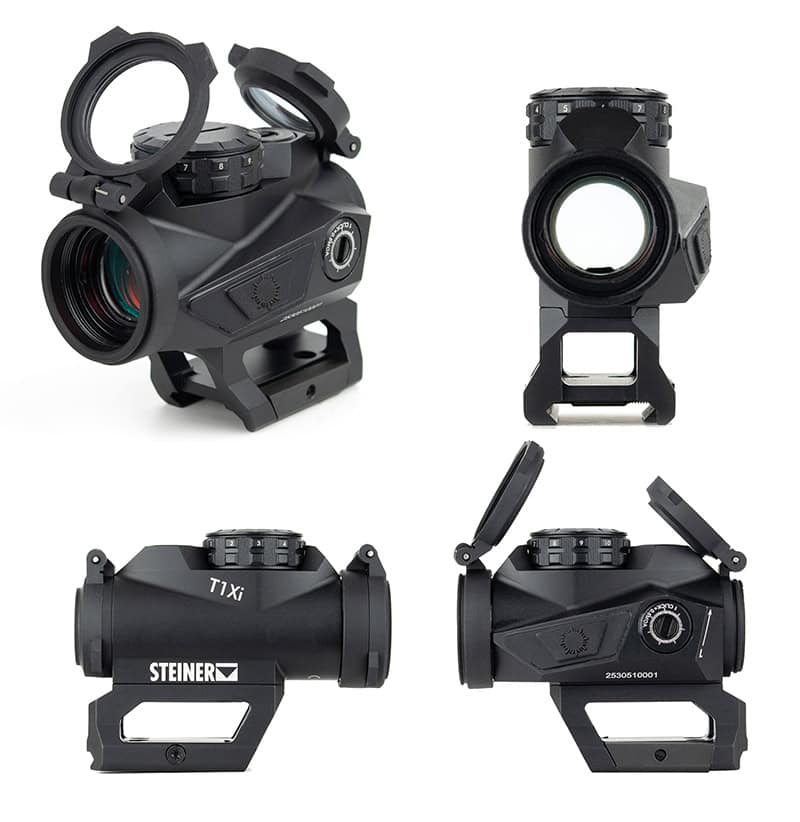Market Smarter, Not Harder
2023 Digital Marketing Trends Every
Range & Retailer Needs To Know
In last month’s issue, we shared why traditional marketing tactics still have a place in your overall marketing strategy, but there’s no denying digital has changed — and continues to influence — the sales and marketing landscape.
According to IAB research on advertising spend and revenue, digital media accounts for over three-quarters of total media budgets in the U.S.1 In 2022, digital ad spend worldwide was estimated at $441 billion and is projected to reach $485 billion this year.2
There are so many tactics and strategies that fall under the larger, ever-growing digital marketing umbrella it has become increasingly important for ranges and retailers to evaluate and prioritize which ones they spend their resources on. To help, here are the most notable trends to consider:
Data Privacy Matters
In 2023, data privacy will become even more critical as people look to protect their personal information and only share it with companies they trust.
After pushing back its timeline (again), Google is set to phase out third-party cookies in 2024. No, not chocolate chip cookies, but the small pieces of text sent to a browser by every website a user visits.
From a user standpoint, cookies help a website remember information about your visit to make it easier to visit again and make the site more useful to you. Marketers, however, have long used cookies to identify what their audience’s interests are based on browsing activity, purchases and preferences. The information is then used improve the user experience and delivered targeted ads.
“Privacy concerns coupled with consumer protection legislation will have a huge impact on how to potentially advertise to new consumers,” said Charles Anderson, CEO of GAT Marketing, a full-service traditional and digital marketing agency focused on the firearms industry. “The issue is compounded by the firearm industry’s limited access to Google, Facebook, etc.”
For those who haven’t already, 2023 should be spent developing a plan for how your business is going to effectively market in a cookie-less world. We’ll give you a hint — collect and protect as much first-party data as you can.
Email Marketing Reigns Supreme
First-party data is any data collected directly by the organization, which can include information collected from website behavior, lead generation campaigns, surveys, social media, or even customer service/sales conversations. But, given the return on investment (ROI) of email marketing, email addresses are without a doubt considered the holy grail of first-party data.
Email marketing is a low-cost, high-return method. For every $1 spent on email marketing, you can expect an average return of $36 — a higher return than you can expect from any other form of marketing, digital or otherwise.3 For retail, e-commerce and consumer goods or services, the ROI can be as much as $45 for every $1 spent.4
“Today’s curated email newsletter is the number-one most successful marketing campaign. Why? Because it’s affordable, easy to manage, direct to the customer and provides almost instant feedback,” said Laura Burgess, founder and president of Laura Burgess Marketing (LBM), which provides public relations and marketing communications to companies within the firearms industry.
If this isn’t enough to convince you, Ashley Gall, LBM CFO and VP of marketing and events, pointed to the following statistics.
HubSpot’s Blog Research of 2021 found of the B2C marketers they interviewed, 87% were using an automated email campaign platform with an astounding 50% of their customers making purchases due to these emails (SalesCycle 2022 report). SalesCycle also documented 59% of email newsletter respondents reported email influenced their purchase. And a 2021 report from Statista suggests email is the leading way consumers find coupons or promotions on their favorite brands.
“Just a couple hours a month with a small budget and your range or store can reach out and touch your customers at least once a month in a friendly, personal way that will demonstrate your commitment to them and your brand,” Burgess and Gall said.
For every $1 spent on email marketing, you can expect an average return of $36 — a higher return than you can expect from any other form of marketing, digital or otherwise.
Video Continues To Outperform
People are watching more video online than ever before. In one minute, viewers around the world spend 1 million hours streaming video, making video content a priority for marketers this year.5
In 2022, 86% of businesses used video as a marketing tool — a 25% increase from 2016.6 Why? Not only do videos grab attention, but they also keep it. Because they can combine movement, sound and text, videos can pack a lot of information into a smaller package.
A simple Google search for “video ads vs. static” will return pages of results from various digital marketing experts who have conducted A/B tests all yielding the same results — video ads are more effective.
In analyzing the most recent 676 million video and display impressions (676,698,958 to be exact) the Topple research team found video click-through rates (CTR) were nearly 16X higher than static display advertising. However, on the flip side, display advertising remains significantly more efficient with cost-per-clicks (CPC) 65% less expensive than video.
According to the team at Topple, the best strategy appears to include a combination of both highly engaging video ads paired with highly efficient display ads.
Nano & Micro Influencers Deliver
Like it or not, influencer marketing is here to stay. What was once only used by a handful of forward-thinking marketers in select consumer product segments is now being used by almost every business with a digital presence.
In 2023, ranges and retailers should spend time learning the ins and outs of influencer marketing, as today’s content creators can generate a significant ROI for those who collaborate with them.
According to Aspire’s 2022 State of Influencer Marketing report, 70% of brands are working with nano and micro influencers to leverage their highly engaged audiences and low cost per engagement.7 Nano influencers consistently achieve the highest engagement rate, with an average of 3.69% — more than double the engagement rate of both the macro influencers (1.61%) and the mid-tier influencers (1.62%).
“Not everyone realizes it’s not about the size of a content creator’s following, but their relevance to your audience,” said Jeff Dillow, account director of TREAD Agency, which provides digital marketing services for shooting sports, fishing, boating, overland, off-road and other outdoor market segments.
For those thinking this all sounds like a foreign language, there’s a reason why. Influencer marketing is a relatively newer marketing strategy. The term “influencer” wasn’t even added to the dictionary until mid-2019.
Here’s what you need to know: Nano influencers are defined as those with between 1,000 and 10,000 followers; micro influencers have an audience of 10,000 to 100,000 followers and macro influencers have 100,000 up to 1 million followers. Mega influencers, such as most celebrities, boast more than 1 million followers.
For brands, nano and micro influencers offer quite a bit of bang for the buck.
“In many cases, we’re seeing a 10–11X return on investment over banner ads,” said Dan Kahn, president of TREAD Agency. “Their audiences tend to be more engaged and are more likely to take action.”
In the case of independently owned ranges and retailers, finding relevant influencers isn’t as difficult as one might think. From the 2A advocate suburban soccer mom who shares lifestyle content on Instagram to the range regular you often see filming videos for his YouTube channel, influencers are all around you.
“Look for an influencer you can grow together with,” said Kahn. “The key is making sure it’s not a surface-level transactional relationship, but instead, an authentic and mutually beneficial long-term partnership.”
You may even consider looking within your own four walls. A growing trend within influencer marketing that stems from the demand for more authentic content is the desire to see an increase in employee-driven or employee-based content. User-generated content can significantly impact sales and how brands are perceived; it only makes sense for brands to begin treating their own employees as influencers through employee advocacy programs.
AI Is The Future … And The Present
The artificial intelligence (AI) market is expected to be worth $36.8 billion by 2025.8
In an article for the Digital Marketing Institute, Dan Hughes wrote, “The widespread adoption of AI was once considered a far-fetched notion dreamed up in sci-fi stories, but it’s now a living, breathing part of our everyday reality.”
We’re not suggesting you replace your staff with robots. After all, people are what help set you apart from the big-box and online-only retailers. But certain AI tools, like email automation and chatbots, can help you serve your customers more efficiently.
Sixty-seven percent of internet users have used social media, live chat or texting to contact customer service, with 56% of customers reporting they prefer to message rather than call customer service.9 Because of the prevalence of technology like smartphones and Wi-Fi, people expect their messages to be answered promptly. Thirteen percent of U.S. consumers expect brands to respond within the first hour of reaching out on social media, while 76% expect a response in the first 24 hours.10
Take the time to setup quality automated messages for both email and social media and email. At the very least, the automated message should assure the customer you’ve received their request and let them know when they can expect a response. You can also set up automated responses based on frequently asked questions.
With many businesses struggling to respond in a timely manner, or even responding at all, integrating AI into your digital marketing strategy can set you apart from the competition.
From the 2A advocate suburban soccer mom who shares lifestyle content on Instagram to the range regular you often see filming videos for his YouTube channel, influencers are all around you.
Smarter, Not Harder
No matter what marketing strategies you decide to focus on in 2023, the important thing is you make a plan and stick with it. It’s easy to push tasks like filming video or taking photos, sending out an email newsletter or monitoring your social media accounts for customer comments and messages to the back burner, especially for small businesses. But guess what? Embracing the digital tools at your disposal can help you market smarter, not harder.






